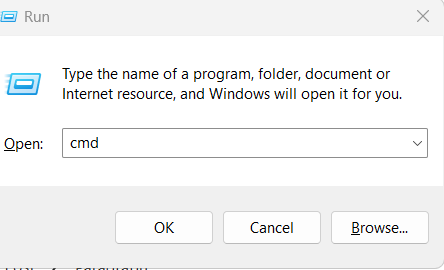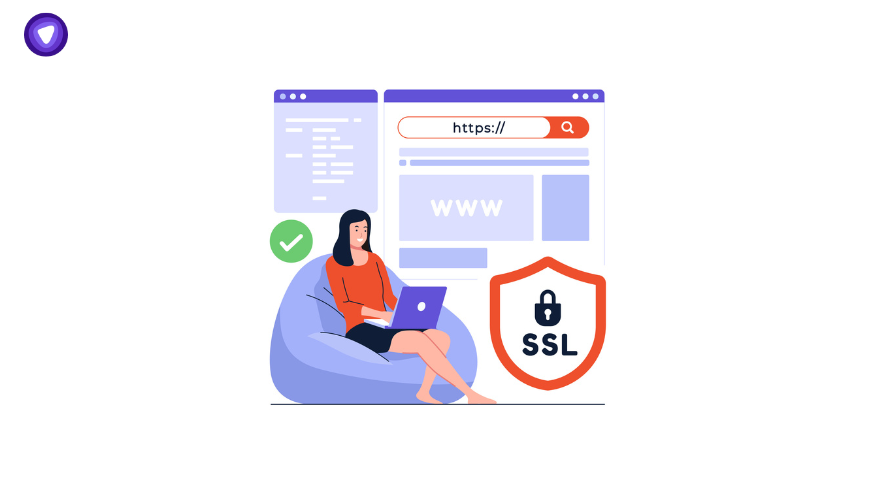In enterprise networks, accuracy is everything—especially in DNS. If you’re launching a branded VPN, deploying secure portals, or maintaining a distributed infrastructure, understanding the difference between an FQDN and a domain name isn’t optional.
And yet, many teams still get it wrong.
They use simple domain names where they should be applying FQDNs, breaking VPN tunnels, invalidating TLS certs, and disrupting DNS failovers. Even worse, these errors often surface only in production.
So, what does FQDN actually mean? How is it different from a regular domain? Why does it matter so much for companies deploying secure services like white-label VPNs, SaaS platforms, or zero-trust networks?
This blog breaks down exactly what an FQDN is, why it’s different from a domain name, and where your business must use it, especially if you care about security, uptime, and scalability.
Let’s clear up the confusion and prevent costly misconfigurations.
What Is FQDN?
FQDN stands for Fully Qualified Domain Name. It is the complete domain name that specifies a unique location on the Internet. An FQDN contains all DNS hierarchy levels—hostname, subdomain (if any), domain, and top-level domain (TLD)—ending with a trailing dot to denote the DNS root.
FQDN format example:
vpn01.eu-west.purevpn.net.Breakdown:
- vpn01 → Hostname
- eu-west → Subdomain
- purevpn → Domain
- net → Top-Level Domain
- . → Root (optional but implied)
An FQDN example used in enterprise systems might be auth.east.companyvpn.com. This isn’t branding—it’s infrastructure. It’s what tells DNS where to point and what allows services to validate identity through certificates and access control.
So when someone asks “What is FQDN?”, the technical answer is:
A complete domain-based string that maps uniquely to a single machine or service using DNS.
FQDN vs Domain Name: Key Differences
People often blur the lines between FQDN and domain name, especially during DNS configuration or SSL setup. But the difference is critical.
Here’s how they compare:
| Feature | FQDN | Domain Name |
| Structure | host.subdomain.domain.tld. | domain.tld |
| Uniqueness | Always globally unique | Can refer to multiple endpoints |
| Use Case | DNS resolution, VPN endpoints, TLS | Branding, marketing, email |
| Visibility | Mostly backend usage | Mostly public usage |
An FQDN is like a GPS coordinate. A domain name is more like a city name. One is specific; the other, general.
This matters especially when building white-label VPN solutions where FQDNs dictate client-server relationships, load balancer targets, and compliance-grade trust paths.
When Do You Need to Use an FQDN?
For internal apps? Maybe not. But when security, compliance, or scalability matter, using an FQDN isn’t a recommendation—it’s a requirement.
Here are the most common business scenarios where an FQDN is non-negotiable.
1. TLS/SSL Certificates
Certificate authorities (CAs) issue SSL certs to specific FQDNs, not generic domains. If your service is auth.eu.yourvpn.com, the cert won’t validate on yourvpn.com.
2. White Label VPN Endpoints
In a white-label VPN, you assign custom-branded server URLs. Your clients don’t want us1.genericvpn.com—they want:
- connect.companyvpn.com
- vpn01.clientbrand.net
These are FQDNs, and they’re vital for branded connectivity, split-tunneling, and endpoint verification.
3. DNS Load Balancing & Failover
FQDNs allow you to build geographic redundancy:
- auth.us.company.com
- auth.eu.company.com
This structure enables smart routing, improves uptime, and simplifies management across zones.
4. Email Authentication (SPF, DKIM, DMARC)
Email filters verify FQDNs to match against SPF or DKIM records. A mismatch between your sender hostname and DNS record? You go to spam.
5. Firewall & Allowlist Rules
Security policies rarely accept just domain names. They require exact match FQDNs to filter traffic or allow outbound connections.
Example:
If you’re deploying user access to https portal IP address or FQDN, always use the FQDN. It adapts with DNS changes, supports SSL, and avoids hardcoded IP issues.
Still using just IPs in 2025? That’s a risk. Use FQDNs to gain DNS-layer flexibility, trust, and long-term maintainability.
How to Find FQDN on Any Machine?
If you’re deploying or troubleshooting any application—especially a white-label VPN—knowing how to identify the FQDN of a server is key. Here’s how to do it in different environments.
On Windows
- Press Win + R, type cmd, and press Enter.

- In the terminal, run:
nslookup %computername%
- Or check with:
ipconfig /all
- Look for the Primary DNS Suffix—combine this with the hostname for your FQDN.
On Linux/Unix
- Open your terminal.
- Type:
hostname -f
Or:
getent hosts $(hostname)
This returns the FQDN hostname your system uses on the network.
In the Cloud (AWS, GCP, Azure)
- Cloud providers often assign an internal FQDN to each instance.
- You’ll find it in:
- The instance metadata
- DNS settings
- Admin panels under “network interfaces”
- The instance metadata
FQDN vs URL vs Hostname: Stop Mixing Them
Understanding how FQDN, IP addresses, and URLs differ isn’t just academic. These elements play very different roles in how DNS resolves traffic, especially in enterprise-grade systems like VPNs, SaaS tools, or secure portals.
Here’s how to break it down:
FQDN (Fully Qualified Domain Name)
- Human-readable DNS name
- Includes hostname, domain, and TLD
- Example: vpn01.euwest.companyvpn.com
FQDNs are critical for TLS, monitoring, DNS routing, and branding. Every secure endpoint should have one.
IP Address
- Machine-readable network address
- IPv4: 192.168.1.1
- IPv6: 2001:0db8:85a3::8a2e:0370:7334
Used in routing, but dangerous to hard-code in certs or configs. IPs change. FQDNs don’t.
URL (Uniform Resource Locator)
- A URL includes the FQDN + a protocol and path.
- Example:
https://vpn01.euwest.companyvpn.com/login
URLs are used in browsers and apps to call specific resources, but they’re built on top of FQDNs.
| Element | Purpose | Changes Often? | Example |
| FQDN | Name assigned to a host | Rarely | vpn01.us.companyvpn.com |
| IP Address | Numeric network location | Frequently | 34.212.100.25 |
| URL | Full path to a web resource | Depends | https://vpn01.us.companyvpn.com/login |
How SaaS Companies Use FQDNs?
A SaaS company building a secure dashboard for global customers might assign:
- auth.eu.customerbrand.com
- billing.us.customerbrand.com
Each is a distinct FQDN backed by DNS and SSL. This enables:
- Region-specific load balancing
- Isolated certs for tenant environments
- DNS-level disaster recovery
FQDNs are foundational to secure, scalable SaaS deployments—especially if you’re offering white-labeled access portals.
Want to see how real businesses are setting up FQDNs for VPNs, DNS security, and branded dashboards? Join the conversation on Reddit – r/PureWhiteLabel
Why FQDNs Are Essential in White Label VPN Deployments?
When you’re building a white-label VPN offering for clients, FQDNs aren’t optional—they’re foundational. They control how traffic flows, how branding is maintained, and how trust is established through certs and DNS security.
Let’s break it down.
1. Branded Server Access
Your clients don’t want us2.genericvpn.com. They want branded access points like:
- connect.enterprisevpn.net
- login.vpn.healthsecure.org
Using FQDNs, you can assign clean, secure, and client-specific endpoints that support branding without touching the IP layer.
2. SSL Certificates & Trust Chains
Every FQDN maps to a unique certificate. That means:
- Better isolation between clients
- Stronger encryption through TLS
- No certificate conflicts or browser warnings
3. Regional Load Balancing
Want to distribute traffic by continent or country?
Create region-based FQDNs like:
- vpn01.us.clientvpn.com
- vpn01.fr.clientvpn.com
This structure lets your white-label deployment scale globally while maintaining simple endpoint management.
4. Administrative Control
FQDNs let you:
- Assign servers dynamically
- Repoint DNS without touching apps
- Reduce the need for client-side reconfiguration
This makes onboarding new customers faster and smoother.
Follow us for weekly briefs on VPN deployments, DNS hardening, and white-label case studies. PureVPN Partner Solutions on LinkedIn
Build Smarter VPN Solutions For Your Business With PureVPN
At PureVPN White Label, we enable full FQDN control:
- You bring your domain
- We map your VPN servers
- You get global DNS resilience
- End-to-end support for branded, secure deployment
Final Word: Why FQDN Isn’t Optional
The difference between a domain and a fully qualified domain isn’t just a detail—it’s a control layer.
FQDNs power security.
FQDNs enable branding.
FQDNs scale global infrastructure.
If your business handles authentication, sensitive traffic, or white-labeled products, your DNS architecture must be FQDN-first.


